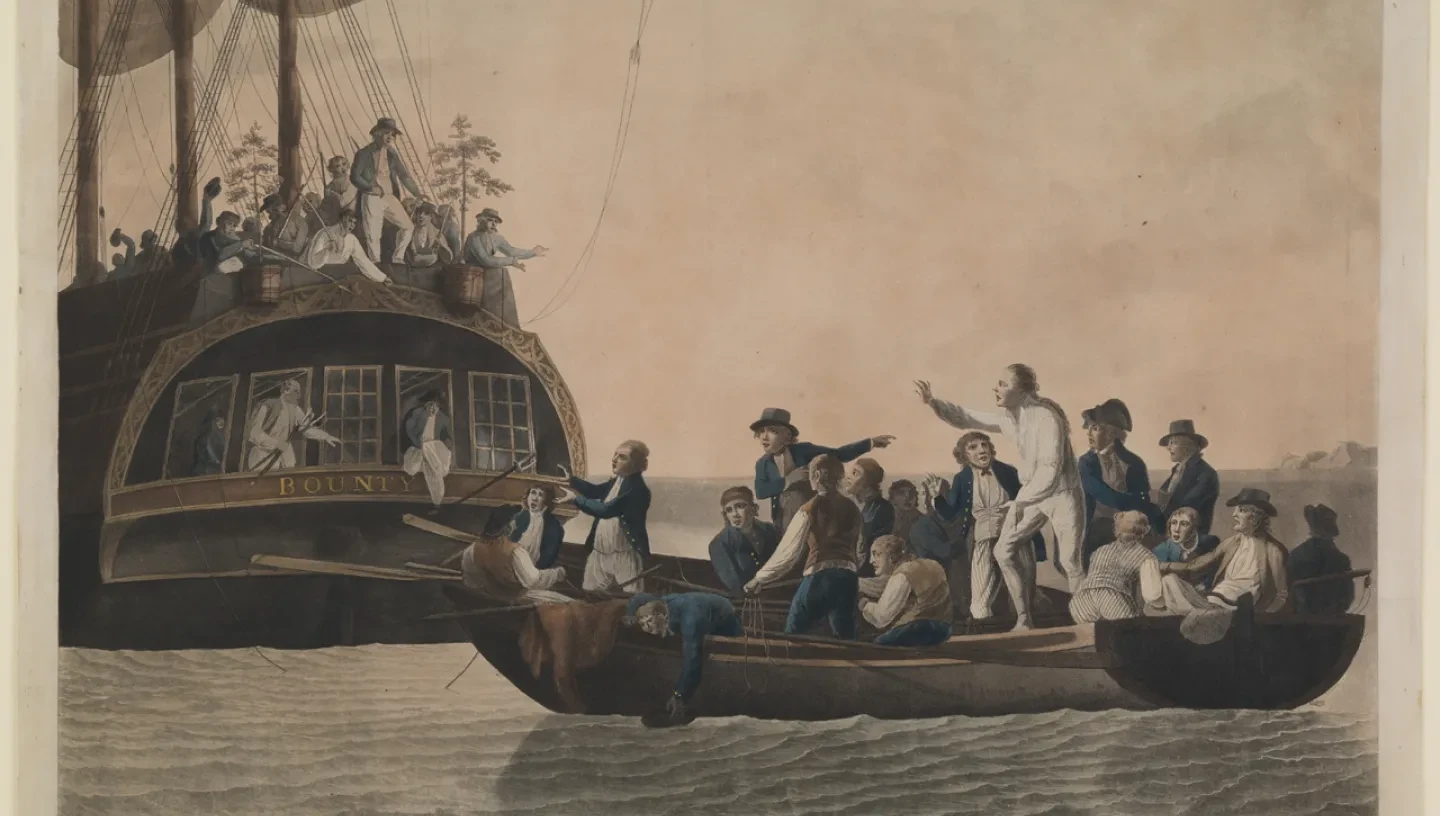
In 1789, master’s mate Fletcher Christian led a notorious mutiny on the Bounty, a ship under the command of William Bligh.
The mutiny on the Bounty is one of the most well known mutinies that ever occurred in the British Royal Navy. On 28 April 1789, master’s mate Fletcher Christian, along with 18 mutineers, took control of the Bounty and cast the captain, Lieutenant William Bligh, and 18 of his men adrift in the Pacific Ocean in a small boat.
Why was the Bounty at sea?
The Bounty, under the command of William Bligh, set out on an expedition to Tahiti in 1787 to collect breadfruit to transport to the West Indies. It was a long and difficult voyage and discipline was a problem. The Bounty was overcrowded and there were no marines on board to enforce the captain’s authority.
Ten months after leaving England they reached Tahiti, but it was the wrong season to collect the breadfruit, so they were forced to stay on the island for five months.
What happened in Tahiti?
The crewmen lived onshore and enjoyed the balmy climate and many took temporary Tahitian ‘wives’ and got Polynesian tattoos. It was a much more comfortable life than they could expect to return to back in Britain.
What caused the mutiny?
When the men returned to sea they were ill prepared for the return to shipboard conditions and discipline. There had been friction between Bligh and the master’s mate Fletcher Christian ever since they’d left Britain and things escalated.
Twenty-three days out to sea and 1300 miles from Tahiti, Christian and his men woke Bligh in the middle of the night, pointed a bayonet at him and forced him on deck. No blood was shed; instead the mutineers ordered Bligh and 18 of his loyal followers to board the Bounty’s launch.
Of the 42 men onboard, apart from Bligh and Christian, 18 joined the mutiny, two were passive and 22 loyal to Bligh (four of whom had to stay aboard the ship).
What happened to Bligh?
Bligh was a skilled navigator with a keen attention to detail. Armed with a magnetic compass, a 10-inch sextant, a quadrant and two books containing mathematical, astronomical and geographical information he and his men managed to navigate west across the Pacific.
They headed first for the island of Tofua to replenish their meagre supplies, then went on for a further 47 days to the island of Timor, south-east Asia. They’d undertaken a voyage of 3618 nautical miles. Once recovered, the men returned to England to report the mutiny.
What happened to the mutineers?
Having seized the Bounty, the mutineers returned to Tahiti to resume the life they had been enjoying. However, fearing the arrival of a Royal Navy ship and the consequences of their mutiny, Christian and eight of the mutineers, with Tahitian men and women, sailed the Bounty for remote and ill-charted Pitcairn Island.
After landing, they burnt the Bounty to avoid detection. Despite having risked everything, they now began to fight among themselves, Christian was among those killed, as eventually were all the Tahitian men, but no one left the island.
The main island on Pitcairn, Adamstown, takes its name from the last-surviving mutineer, John Adams, who died in 1829. Descendants of the mutineers still live on the island today.
Entry to the National Maritime Museum is free, open daily from 10am.